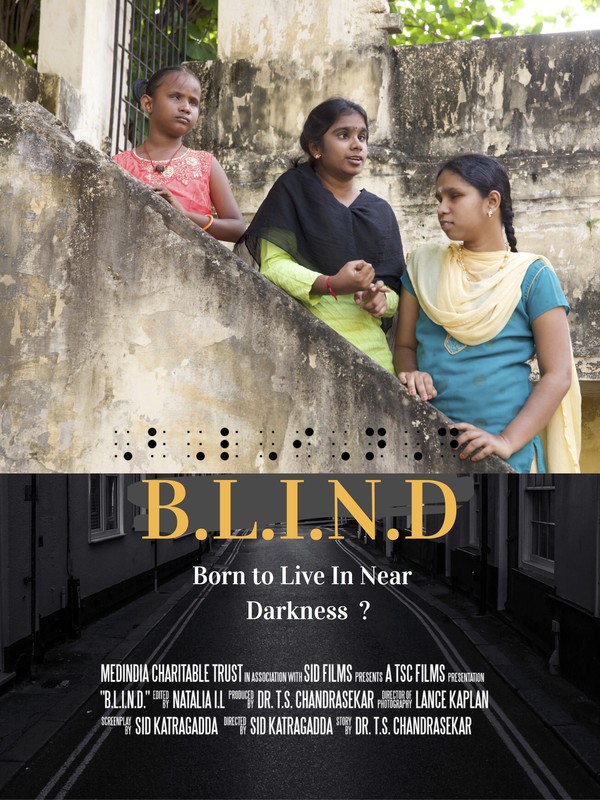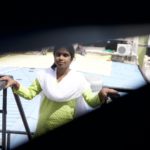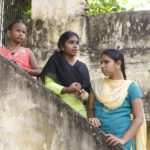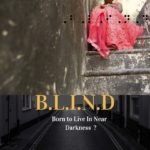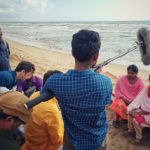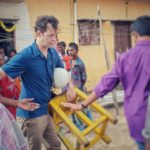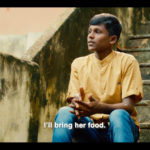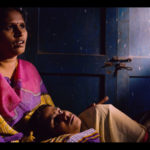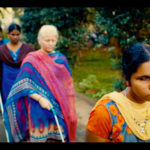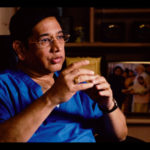B.L.I.N.D : Born to Live In Near Darkness? (trailer)
| Chandrasekar Seshadri Thoguluva | Writer | As an exponent of creating public awareness , Authorized several short stories in Tamil and English with laudable recognition from media, journals , NGOs and Governmental organisations.Writer of several short films like The Great trap , Chottu and Mottu and Who is he ?.and won awards from the professional societies.Writer of several articles related to environment , personal hygiene and human relationships with laudable appreciation from media , journals |
| SIDDHARTH KATRAGADDA | Writer | Varanasi (Best ForeignFilm-Atlantic City Film Festival, 2013), Painless (Quarterfinalist-Page Screenplay Awards 2016; Semifinalist -Screencraft Drama Awards). Dark Rooms & The Other Wife (San Diego Book Awards,2002) |
| Chandrasekar Seshadri | Producer | Producer and director of several short films like The Great Trap , Chottu and Mottu and Who is he ? for public awareness and won the awards from the professional societies . As a proponent of environmental protection , he has produced 4 short films like Water conservation , Air pollution , Afforestation and Land fertility and won great appreciation from the concerned. |
| T.C.Sharmila | Producer | Co producer of the above mentioned projects and as an unbiased critic , contributed for the successful outcome of the above mentioned projects |
| KALA | IKey Cast | “As Shweta” |
| SADHANA | Key Cast | “As Sadhana” | SNEHA | Key Cast | “As Sneha” |
| Dr.T.S.CHANDRASEKAR | Key Cast | “Dr.T.S.CHANDRASEKAR”main actor in the short films namely - The Great Trap and Air pollution and lent voice for the short films namely Water conservation and Land fertility. Directed all the short films mentioned above have produced by him |
| SIDDARTH KATRAGADDA | Director | VARANASI (Best ForeignFilm, Atlantic City Film Festival, 2013) |
| LANCE KAPLAN | Director of Photography | RANGITARANGA (Kannada Feature Film), NOBODY BUT US, WORLDS (Short) |
| NATALIA IYUDIN | Editor | Two Sentence Horror Stories, The Garden. |
| Film Type | Documentary, Short |
| Runtime | 27 minutes 42 seconds |
| Completion Date | April 3, 2020 |
| Production Budget | 16,700 USD |
| Country of Origin | India |
| Country of Filming | India |
| Film Language | Tamil |
| Shooting Format | DIGITAL(ARRI) |
| Aspect Ratio | 16:9 |
| Film Color | Color |
| First-time Filmmaker | No |
| Student Project | No |
Director Biography - SIDDARTH KATRAGADDA
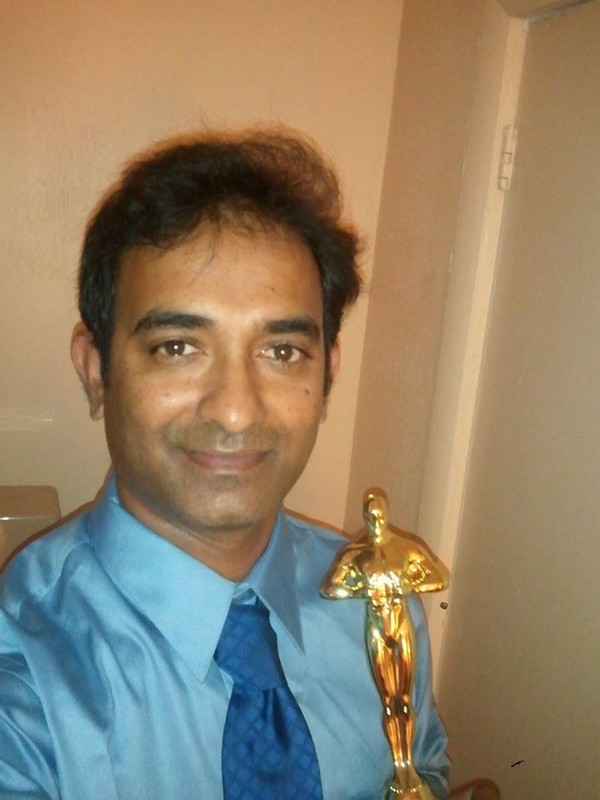 Sid Katragadda is an emerging, award-winning screenwriter, filmmaker, poet and playwright. His film ‘Varanasi’ won Best Foreign film at the Atlantic City Film Festival. He has been placed in various Hollywood screenplay contests, including Page, Screencraft and Nicholls. His play, ‘The Power Outage’, will be produced by Towne Street Theatre, Hollywood, in April 2020. His books, Dark Rooms and The Other Wife, won the San Diego Book Prize in 2002,2003. His writing has been published in CNN, Grey Sparrow Press, New Plains Review and various literary journals. He lives in San Diego, California.
Sid Katragadda is an emerging, award-winning screenwriter, filmmaker, poet and playwright. His film ‘Varanasi’ won Best Foreign film at the Atlantic City Film Festival. He has been placed in various Hollywood screenplay contests, including Page, Screencraft and Nicholls. His play, ‘The Power Outage’, will be produced by Towne Street Theatre, Hollywood, in April 2020. His books, Dark Rooms and The Other Wife, won the San Diego Book Prize in 2002,2003. His writing has been published in CNN, Grey Sparrow Press, New Plains Review and various literary journals. He lives in San Diego, California.
Director Statement
ABOUT THE PRODUCER
B.L.I.N.D, the documentary film was conceptualized and shot to create universal awareness on empowering the blind. It revolves around the life of several blind school students, whom Dr.Chandra met during his free medical camp, and the ideas he innovated to empower them.
Dr.T.S. Chandrasekar is an internationally reputed physician, and recipient of the prestigious Presidential PADMA SHRI award from the Government of India. For his professional contributions, and the worldwide impact of his charitable work, he was awarded the prestigious MWGO (Master of World Gastroenterology Organization), the third Indian to receive this honor. Yet another note-worthy recognition of his was the "Community Service Award" from the prestigious "American College of Gastroenterology," the first Asian and non-American to receive this recognition,
He believes in the motto “The Empowered should empower the Under-privileged". That is why he started his MedIndia Charitable Trust, a non profit Non Government Organization, to serve the less privileged He focused on the visual and hearing impaired, and physically challenged school students, and worked towards their betterment, independence and dignity.
His innovative ideas in these areas have won him three prestigious state and two national awards, and his innovative projects have been implemented in nearby countries too. His multifaceted talents - lyricist , poet , column writer, short film writer, producer, director, actor, innovator, public awareness and environment protection collaborator - have made a difference to the world around him.
Director's Statement
India is home to the largest blind population in the world. Of the 37 million people across the globe who are blind, over 15 million are from India. What's worse, 75% of these are cases of avoidable blindness, thanks to the country's acute shortage of optometrists and donated eyes for the treatment of corneal blindness. While India needs 40,000 optometrists, it has only 8,000.
B.L.I.N.D (Born to Live In Near Darkness) narrates the story of the helplessness of India’s blind. What drew me to this project was hearing stories about what the visually impaired faced in India. At the time, my mind was blown open by the superstitions and taboos surrounding this issue. The blind and other impaired, are neglected because they are believed to be repaying past sins. Blind women and girls are the hardest hit.
We met four blind girls prior to the shoot, that we decided to make the central focus of the film. The lead character of the film, Shweta, had lost her sight at a young age due to not getting proper medical treatment. Her optic nerves were damaged beyond repair. She suffered from malnutrition and illness, owing to which she had not matured, at fifteen. The next blind girl was an albino girl, a victim of genetic mutation due to generations of intra-family marriages. The third was a premature baby, born blind. And the last had lost her eyes to disease. It was crushing to imagine both what they had been through and how they could go on. But equally arresting was the palpable resilience of these girls. The fact that they could find ways to create meaning in their lives, after such experiences, was awe inspiring. This is what initially drew me to this story.
Also, I tried to intertwine the character arcs of the blind girls with that of our ‘hero’, Dr. T.S Chandrasekar, who gave the blind hope through his innovative braille charts. I was drawn to the story of what inspired him to come up with the braille charts, and his persistence in helping the blind. His H.I.N.T (Hygiene, IQ, Nutrition & Traffic) charts have been implemented in various countries and he was awarded the Padma Shri award by the Government of India, for his charitable work.
One of the things I felt strongly about in the making of B.L.I.N.D is that I wanted this film to have its own language, both tonally and structurally. I wanted to make a film that allowed audiences to feel what I felt when I first went to the Blind schools in Chennai — the tremendous strength, vitality and commitment that these individuals had to each other and to imagining a future for themselves and their country.
It was important to me that the audience not go numb in the watching of this film, or to be so torn up that they shut down and stopped listening. So the balancing between the devastation of these girls had suffered and the incredible force of hope and joy that they embodied was something I grappled with a lot. The shifting tones between pathos, humor, irreverence and joy were something I strived for, trying to keep the film visceral and surprising in its emotion and arc.
To this end, I used all sorts of methods and found myself inventing things along the way. I tried to create the feeling of nostalgia, shooting visual elements that represented a world past and the subsequent loss of that world. I worked a lot with sound and music and the interaction of these elements. I saw the Blind as a sort of character of its own that we revisit throughout the film, learning bits and pieces each time. I tried to give enough history but not too much, and I questioned myself constantly in this regard. This was a real challenge and I hope an audience finds it satisfying but this lacing of elements and tonal shifts was very important to me.

